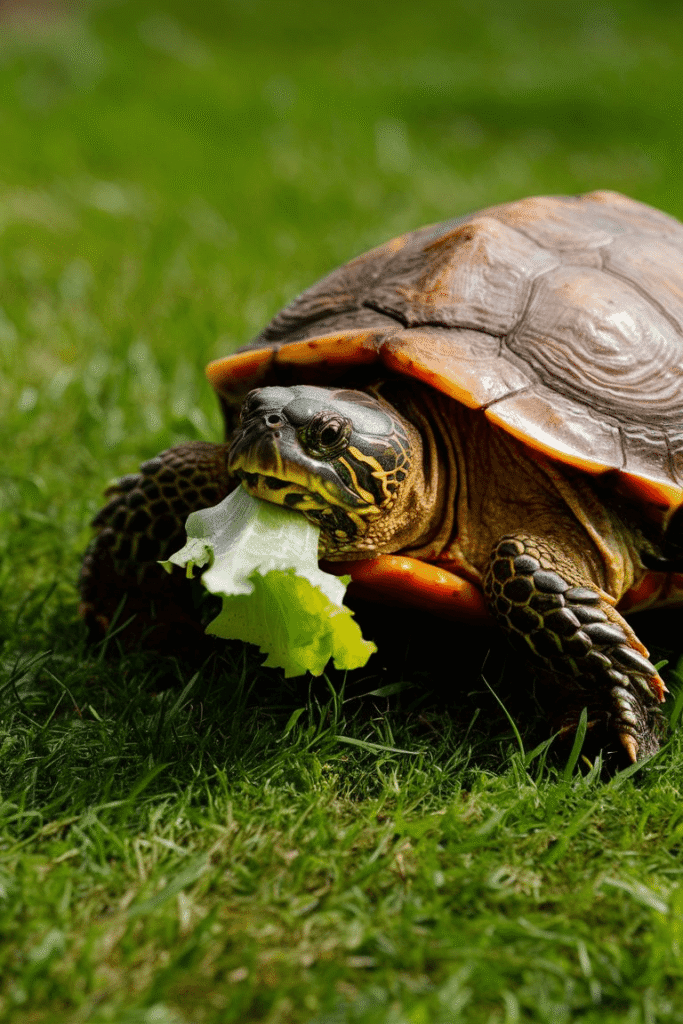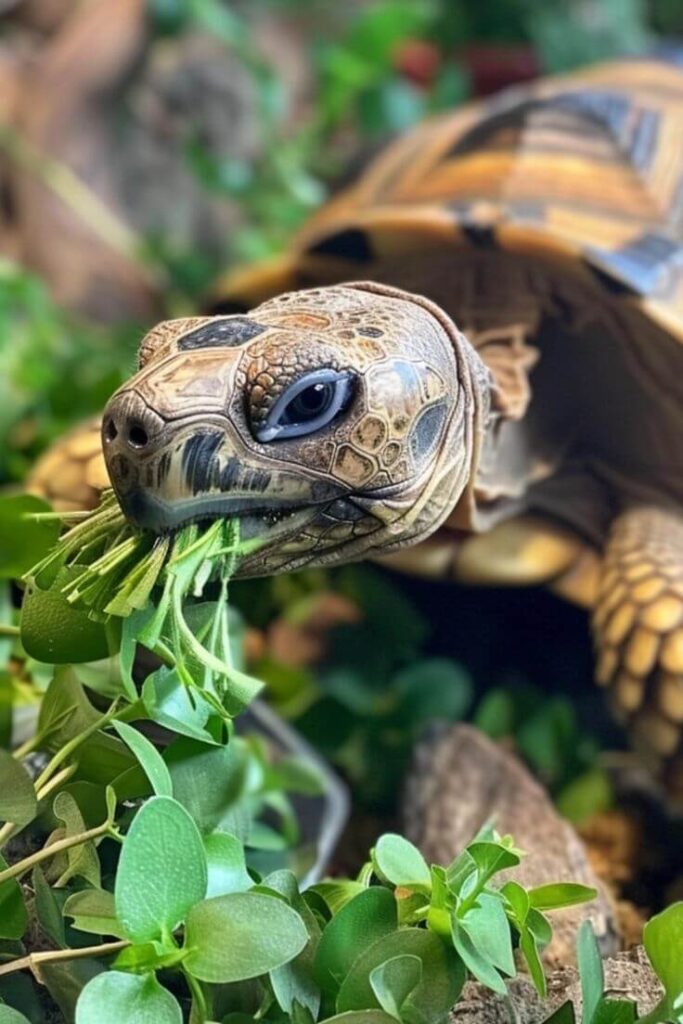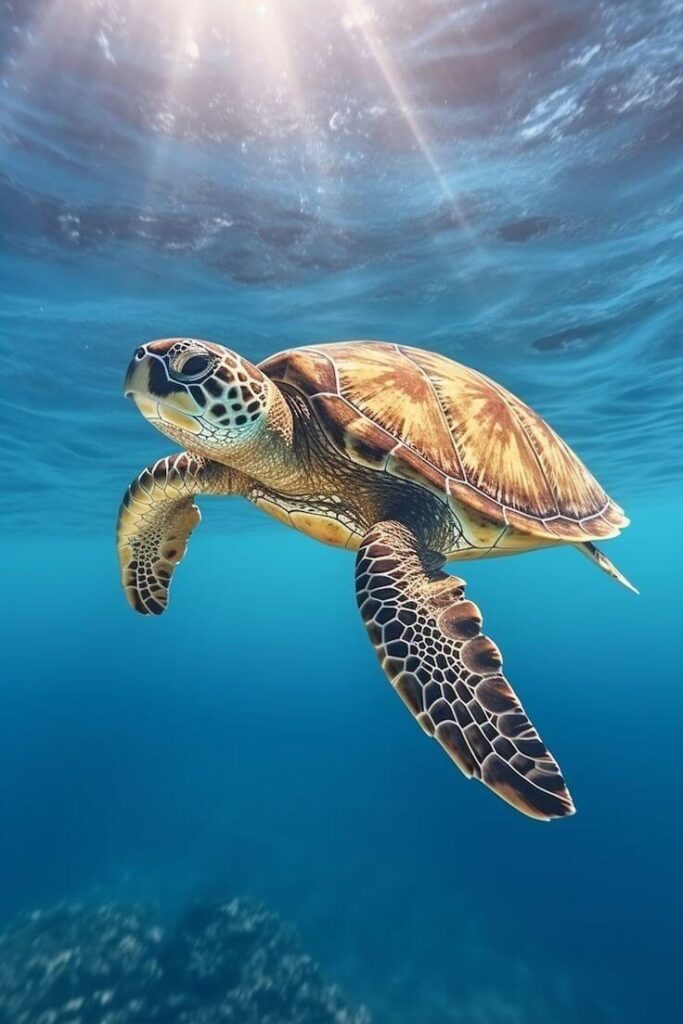Best Food for Baby Red-Eared Slider Turtles
When I first started caring for baby turtles, I quickly realized that the best food for baby red-eared slider turtles must be a carefully balanced mix of both animal and plant elements. Their growth and overall health depend on this combination.
Unlike adults, which thrive on more vegetable matter, young juveniles lean closer to carnivorous options. They often require higher protein from invertebrates, worms, or even small fish to support rapid development.
Because they are natural omnivores, variety makes a big difference. Offering dark leafy greens, pelleted foods, or live insects like crickets, mealworms, and waxworms provides noticeable benefits for energy and shell strength.
From my own observation, turtles under 1 year old that receive fresh food daily show faster, more stable health improvements compared to those raised only on processed items.
At the same time, I’ve also noticed how practical convenience can shape choices. Some keepers prefer commercial pellets because they sink and are easier to monitor, while others experiment with vertebrates or amphibians like frogs and snails. While offering a carnivorous portion of nearly 2/3 of the diet feels natural for hatchlings, I balance this with about 25–30% vegetables and occasionally supplement with earthworms or bloodworms for added nutrients. I’ve personally seen cases where an over-reliance on processed human foods such as bread or meat causes long-term health issues, reinforcing that the right diverse nutrients during the daily feeding window can be the difference between thriving and struggling turtles.

What Red-Eared Sliders Eat / Diet Overview
(Best Food for Baby Red-Eared Slider Turtles)
When I first started caring for red-eared sliders, I realized how different their eating habits were depending on age and setting. In the wild, they often lean toward a more carnivorous diet, eagerly consuming animal proteins, live prey, or even scavenging on smaller organisms. But in captivity, I noticed how important it becomes to create a balanced diet that mixes plant materials and protein sources. Young juvenile turtles thrive when the menu includes more carnivorous items, while adulthood slowly shifts them closer to an herbivorous pattern, showing the adaptability that makes these omnivores fascinating.
In practice, feeding them commercial turtle pellets along with fresh foods and some safe vegetation keeps them thriving. Many pet parent guides suggest about pellets 25% of the meal, complemented by leafy greens and other nutrients. I’ve found that aquatic turtles like these chelonian reptiles respond best to variety—not sticking with one option, but rotating between textures and tastes. The key is providing a safe, omnivorous structure that prevents deficiencies and supports long-term wellness, which in turn helps them flourish whether raised indoors or in outdoor ponds.
Animal-Based / Protein Food Sources
When I began raising juvenile turtles, I noticed that their carnivorous diet leaned heavily toward animal proteins rather than plant materials. Offering live prey like small protein sources ensured proper nutrients intake and made their growth far more visible within weeks. In fact, even in captivity, I saw how aquatic turtles instinctively hunted, much like their relatives in the wild, thriving on a mix of fresh foods and commercial turtle pellets. It became clear that an omnivorous reptile in early life stages relies more on this variety, before gradually adapting toward vegetation in adulthood.
From my personal care routine as a pet parent, I also experimented with balancing safe proportions of pellets 25% alongside small feeder organisms, which kept my chelonian pets not just thriving but visibly energetic. Unlike strictly herbivorous reptiles, these sliders’ omnivores nature allows them to handle balanced diet adjustments across different age groups. By watching their response to nutrients-rich carnivorous options, I understood why maintaining such diversity helps reduce dependency on only one food type and keeps them healthier over time.
Get Food here: best food for baby red-eared slider turtles
Plant / Vegetable-Based Foods & Greens
In my years of raising baby sliders, I’ve noticed how eagerly they nibble on fresh vegetables once they become curious eaters. Their interest in greens often grows as they gain confidence exploring food.
Offering a mix of dark leafy greens such as romaine lettuce, collard greens, and mustard greens provides natural fiber while supporting healthy digestion. These basics form a solid foundation in their diet.
I often rotate in carrot tops, endive, swiss chard, or kale so the turtles don’t become dependent on just one source. This rotation keeps their meals balanced and prevents picky eating habits.
To encourage variety, I’ll sprinkle in parsley or offer a few green beans. Access to dandelion greens or turnip greens from safe, chemical-free spots adds even more excitement to feeding time.
Watching hatchlings float near the surface and forage instinctively as they pick at these foods reminds me that nutrition isn’t just about nutrients — it’s also about letting them express their natural behaviors.
Best food for baby red-eared slider turtles I’ve experimented with clover and pieces of red bell pepper, which bring a boost of vitamin A, a nutrient baby sliders thrive on. In outdoor ponds or larger setups, including safe aquatic plants such as water hyacinth, water lilies, elodea, and even fast-growing duckweed, offers them a chance to graze in a more natural way. I’ve seen that such greens do more than feed—they encourage exploration, movement, and a balanced growth pattern. This approach isn’t about overloading them with one item, but weaving together different greens to create a steady rhythm of nourishment.

How Often / Feeding Frequency
In my own experience caring for aquatic turtles, I’ve noticed that feeding frequency has to be adapted carefully depending on age and size. Very young turtles, especially juveniles that are still under 1 year, often thrive when fed daily, as their rapid growth demands more consistent nutrition. On the other hand, as they mature into adults, I’ve seen keepers mistakenly maintain the same routine, which can lead to unnecessary health complications. A simple adjustment—feeding every two days or even every three days, keeps their metabolism balanced and avoids the sluggishness I’ve observed in overfed specimens.
I’ve had conversations with a vet who emphasized that this staggered schedule reflects how these turtles would naturally encounter food in the wild. Juveniles aren’t built to handle long gaps without food, but adults develop the reserves and slower metabolism to tolerate less frequent meals. Through trial and error, I’ve found that aligning their routine with this principle not only maintains their energy but also minimizes excess waste in the tank. If keepers anchor their feeding rhythm to developmental stages rather than guesswork, their turtles stay lively and responsive.
Supplements, Calcium, Vitamins
Best food for baby red-eared slider turtles, I underestimated how much a veterinarian could help me understand the value of a reptile multivitamin routine. The reality is that shell strength and bone development hinge on a reliable calcium source combined with vitamin D3. I’ve seen noticeable differences when using a simple cuttlebone floating in the tank, compared to relying only on calcium blocks. Some keepers debate whether a balanced multivitamin is always necessary, but from my experience, giving it once per week and rotating with a calcium block on a twice per week schedule provided healthier growth and stronger shells in juveniles I cared for.
Over time, I also learned that supplementation isn’t about excess, it’s about rhythm and consistency. A routine where cuttlebone stays in the water as a natural calcium source, while powdered vitamin D3 is used selectively, balances things out. I often recommend alternating a balanced multivitamin dose once per week with added calcium exposure twice per week, since this mirrors the balance wild turtles get from sun and diet variety. Discussing this approach with a veterinarian gave me confidence that such adjustments don’t just prevent deficiencies, but also reduce risks linked to metabolic bone disease, something I’ve seen firsthand in rescue cases.
Feeding Tips / Best Practices (Feeding in Separate Container, Water & Cleanup) (Risks, Common Diet Mistakes, and Precautions)
Best food for baby red-eared slider turtles, one practice that immediately reduced waste and improved water quality was offering meals in a separate container filled with warm water. Watching them swallow comfortably while keeping the main tank clear of uneaten food made cleanup far easier, and it maintained better hygiene inside the aquarium. It also minimized the chances of overfeeding, which often leads to obesity in growing turtles. A routine cleanup after each meal not only ensured healthier conditions but also gave me the chance to observe subtle feeding behaviors that might go unnoticed in a cluttered tank.
Still, many captive turtles suffer from health issues because owners unknowingly rely on an improper diet. Feeding items like wild-caught fish or random amphibians exposes them to parasites and dangerous pathogens. Some people even give hotdogs, lunch meat, or bread, which I’ve seen cause severe problems. Beyond diet choices, neglecting proper hygiene increases risks of salmonella and harmful bacteria, especially if children handle turtles without washing up. My own practice has always been to wash hands thoroughly after feeding and cleaning, a habit that prevents accidents and maintains trust with the pets while avoiding unnecessary medical bills.
FAQs
Q1: How often should I feed a baby red-eared slider?
For juvenile turtles that are under 1 year, it is best if they are fed daily to support rapid growth. As they become adults, meals can shift to every two days or even three days. Always remove uneaten food and keep a clean tank, since leftover particles spoil water and harm the turtle’s health.
Q2: Can baby red-eared sliders eat fish?
Yes, baby turtles may be offered small feeder fish like guppies or minnows. However, over-reliance on fish in the diet risks overfeeding and an unbalanced nutritional intake. Avoid goldfish due to risks of parasites and bacteria that can harm the turtle.
Q3: Are there foods I should avoid giving a baby red-eared slider?
Yes, avoid processed human foods such as chips, bread, and pasta. Likewise, raw meat, poultry, and dairy products have no benefit and can cause illness. Vegetables like iceberg lettuce, rhubarb, avocado, and onion should never be offered. Foods like hotdogs, lunch meat, and wild-caught fish or amphibians often introduce pathogens and increase the chance of disease.
Q4: Do I need to give vitamins and calcium supplements?
A balanced multivitamin used weekly helps keep turtles healthy. For shell and bone strength, providing a calcium block or cuttlebone once or twice per week ensures they get a reliable mineral source. This step is essential, especially when dietary variety is limited.
Q5: Will turtles eat out of water?
No. Being aquatic turtles, they must eat and swallow with their heads fully underwater. They will not out of water manage food properly. That’s why feeding areas or setups should always accommodate their natural aquatic feeding habits.

Q6: What is the risk of Salmonella?
Turtles can carry salmonella, which spreads through bacteria in water and on surfaces. After handling, feeding, or cleaning, always wash hands thoroughly. This is especially important for households with children or immunocompromised individuals.